Training a service dog for anxiety can be a rewarding and life-changing experience. Service dogs can provide emotional support and assistance to individuals with anxiety disorders, helping them navigate their daily lives more easily and confidently.
Whether you are training a service dog for yourself or someone else, it is important to approach the process with patience, consistency, and positive reinforcement. Here, we’ll walk you through the entire process, from determining your dog’s job to developing their socialization skills and teaching basic manners and obedience training.
We’ll also cover how to work on public access skills and individual response training. Let’s delve deeper into how to train a service dog for anxiety, as well as training the handler to work with the dog effectively. Get ready to embark on this transformative journey with your furry companion.
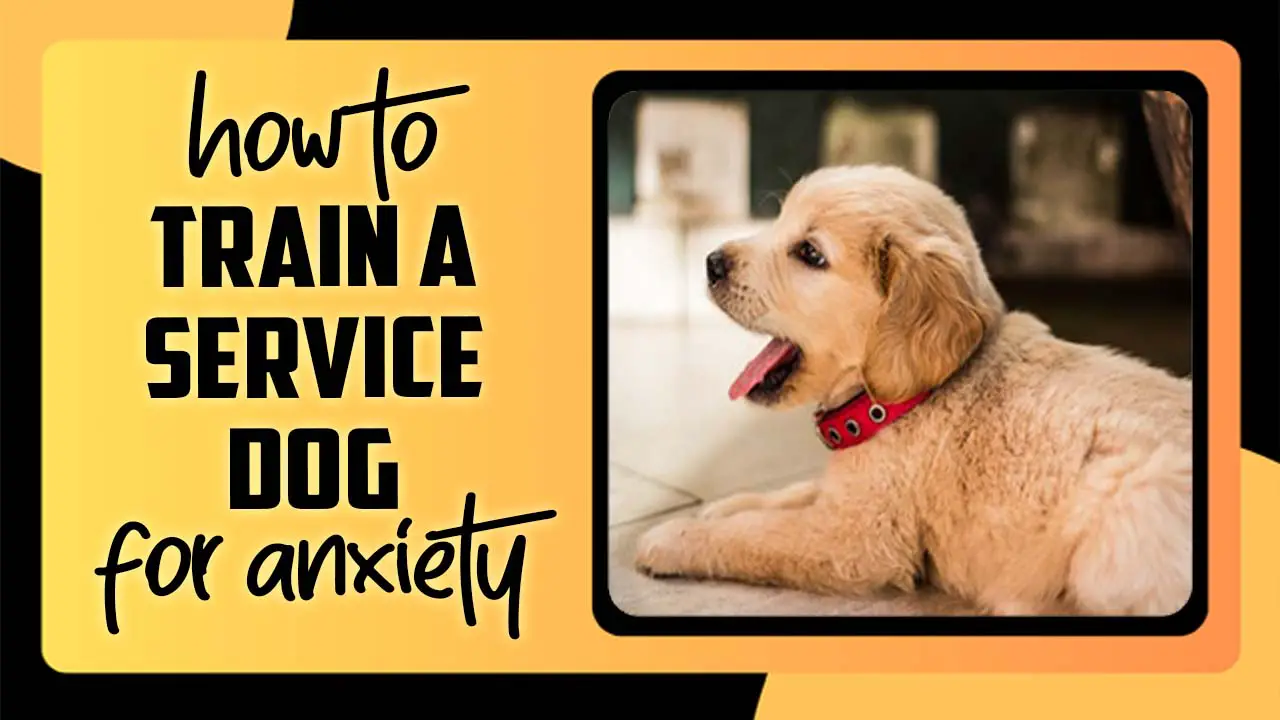
How To Train A Service Dog For Anxiety: 5 Easy Steps
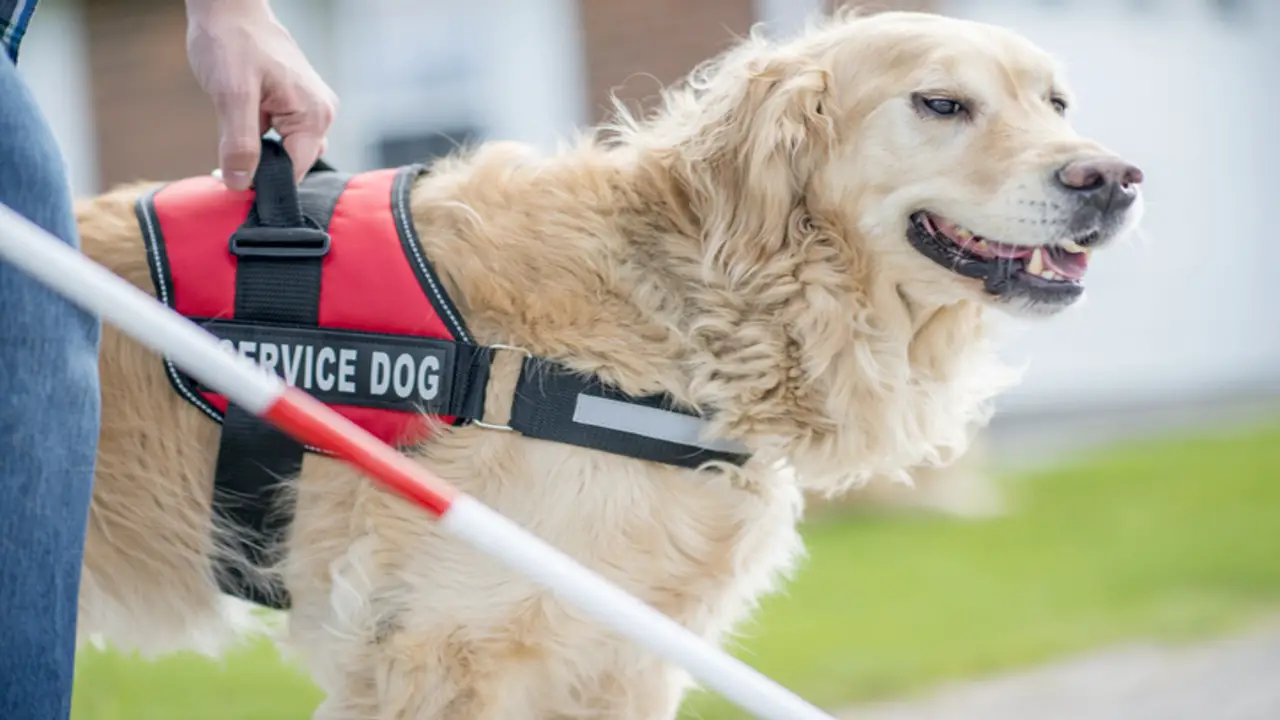
Understanding the role of a service dog in anxiety management is crucial. When training a service dog for anxiety, choosing the right breed and temperament is important. Starting with basic obedience training and socialization sets a solid foundation. Teaching specific tasks such as deep pressure therapy or interrupting panic attacks can help manage anxiety effectively.
Gradually increasing the difficulty of training and working on public access skills ensures the dog can assist in various environments. Follow these 5 easy steps on how to train a service dog for anxiety. Individuals with anxiety can benefit from the invaluable support of a well-trained service dog.
Step 1: Determine Your Dog’s Job
The first crucial step in training a service dog for anxiety is to ascertain the tasks or jobs the dog will need to perform to assist with anxiety-related symptoms. These tasks can vary depending on individual needs, such as providing deep pressure therapy, interrupting panic attacks, or creating physical barriers in crowded spaces.
Consulting with a professional dog trainer or service animal organization is important in identifying and prioritizing these tasks. Once determined, the training begins, teaching the dog to perform each task reliably and on cue. Consistency, positive reinforcement, and patience are key throughout the months-long training process for a fully trained and certified service dog.
Step 2: Develop Socialization Skills
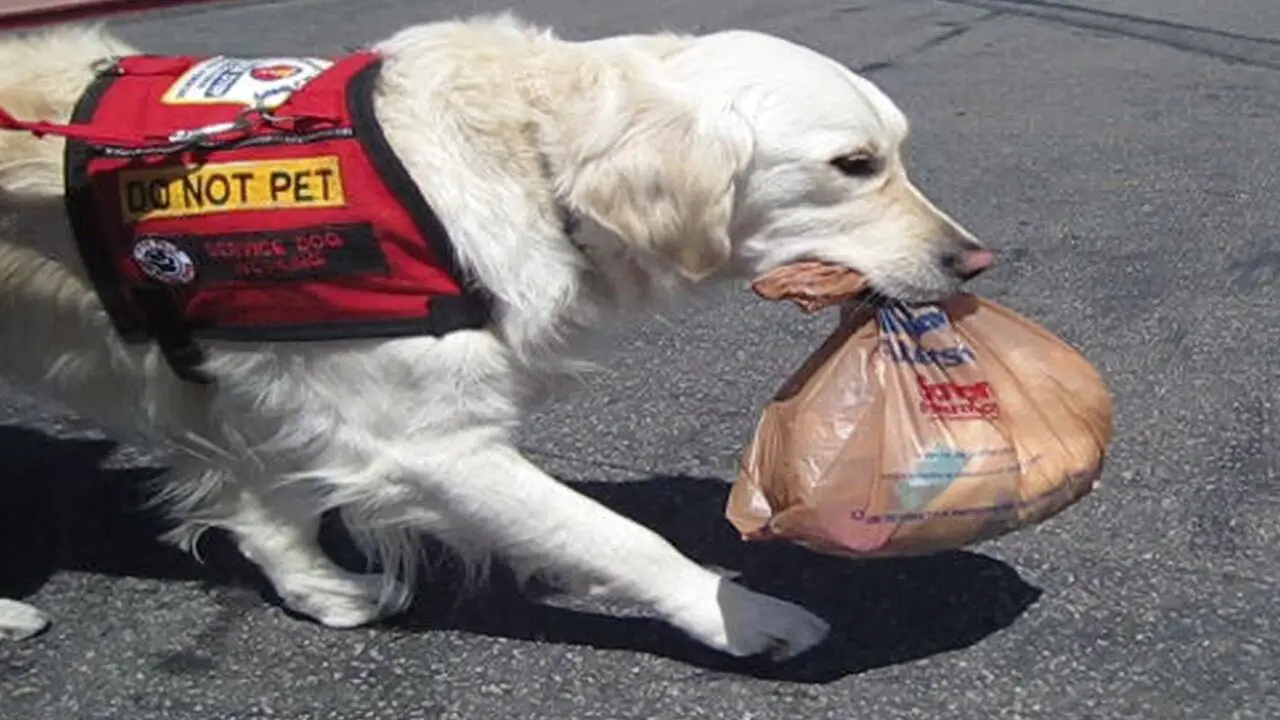
Socialization skills are crucial in training a service dog to help with anxiety. To start, expose your dog to different environments, people, and animals in a controlled and positive way. Gradually increase the difficulty and distractions as your dog becomes more comfortable.
Using positive reinforcement techniques like treats and praise to reward good behavior during socialization is important. Consider enrolling your dog in a professional training program or working with a certified trainer to ensure they receive proper socialization and obedience training. This will help your dog become well-adjusted and confident in various situations.
Step 3: Basic Manners And Obedience Training
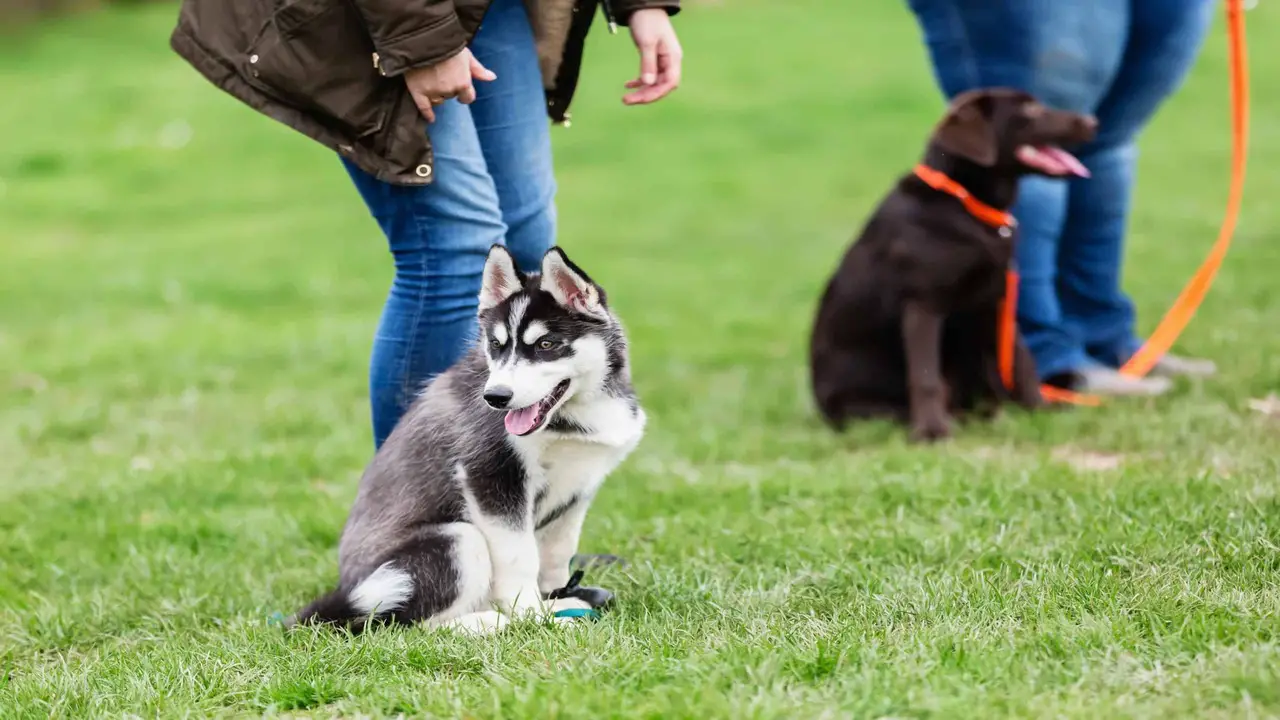
Learning basic manners and obedience training is essential to training a service dog for anxiety. It involves teaching your dog important commands such as sit, stay, come, and leave. Positive reinforcement techniques, like using treats and praise, can be used to reward your dog for following these commands.
Practicing these commands in different environments ensures your dog can perform them in various situations. If needed, you can also consider enrolling your dog in a formal obedience training class or working with a professional trainer to receive guidance and support throughout the training process.
Step 4: Work On Public Access Skills
Working on public access skills is crucial for service dogs to accompany their handlers in public places. These skills involve walking calmly on a leash, ignoring distractions, and staying focused on their handler. Begin practicing these skills in low-distraction environments like your backyard or a quiet park.
Gradually increase the level of difficulty as your dog becomes more proficient. Consistent training and socialization are essential to ensure your service dog is well-prepared for public access. Reinforce positive behaviors and maintain consistent training to ensure your dog’s readiness.
Step 5: Individual Response Training
Individual Response Training is the final step in training a service dog for anxiety. This step focuses on teaching the dog specific tasks or behaviors beneficial during anxiety episodes. Tailoring the training to the individual’s needs is crucial, as it allows the dog to provide targeted assistance.
During this stage, tasks such as deep pressure therapy, interrupting repetitive behaviors, and fetching medication or a phone can be taught. To ensure success, consistency, positive reinforcement, and patience are key. The service dog is equipped with the skills to assist their handler during anxiety episodes by completing the Individual Response Training step.
The Dog Must Be House-Trained And Well-Behaved
To ensure a service dog is well-prepared and able to assist individuals with anxiety, it is crucial that they are house-trained and well-behaved. This starts with basic obedience training, including sit, stay, and come commands. Gradually introducing the dog to different environments and distractions help them remain calm and focused in various situations.
Teaching specific tasks like deep pressure therapy or retrieving medication can help alleviate anxiety symptoms. Additionally, socializing the dog with different people and situations ensures it can handle public settings. Seeking guidance from a certified service dog trainer and reinforcing learned behaviors through regular practice is also essential for a well-behaved and reliable service dog.
Obedience Training For The Dog Is Basic Need
To ensure your service dog for anxiety is well-behaved and reliable, obedience training is crucial. Begin with basic commands like sit, stay, and come, using positive reinforcement techniques such as treats and praise. Gradually increase the difficulty of the commands and introduce distractions to simulate real-life situations.
It’s important to practice obedience training in different environments, including busy or stressful ones, to ensure your dog can focus and respond appropriately. Consistency is key, so establish a regular training schedule and stick to it. Consider enrolling in a professional obedience training class for additional guidance and support.
Training The Handler To Work With The Dog
Establishing a strong bond and relationship with the dog is crucial to effectively train a service dog for anxiety. Start by learning and practicing basic obedience commands together. This will lay the foundation for more advanced training.
Teach the dog specific tasks to help with anxiety, such as deep pressure therapy or interrupting panic attacks. Training the dog to respond to specific cues or signals from the handler is also important. Gradually introduce real-life scenarios and environments to practice and reinforce the training. Always reinforce and maintain the training through regular practice sessions and ongoing reinforcement techniques.
Additional Services That A Service Dog Can Provide For Anxiety
Service dogs trained for anxiety can provide various additional services to their owners. One important service is emotional support, where these dogs offer comfort and solace during anxiety-inducing situations. Another valuable service is deep pressure therapy, where the dogs apply gentle pressure with their bodies or paws to help calm anxiety symptoms.
Additionally, service dogs can be trained to interrupt repetitive behaviors or negative thought patterns associated with anxiety through task interruption. They can also serve as medication reminders, reminding their owners to take medication at specific times. Moreover, these dogs can assist in sensory grounding by providing sensory input, such as licking or nudging, to redirect focus away from anxious thoughts.
Considerations When Training A Service Dog
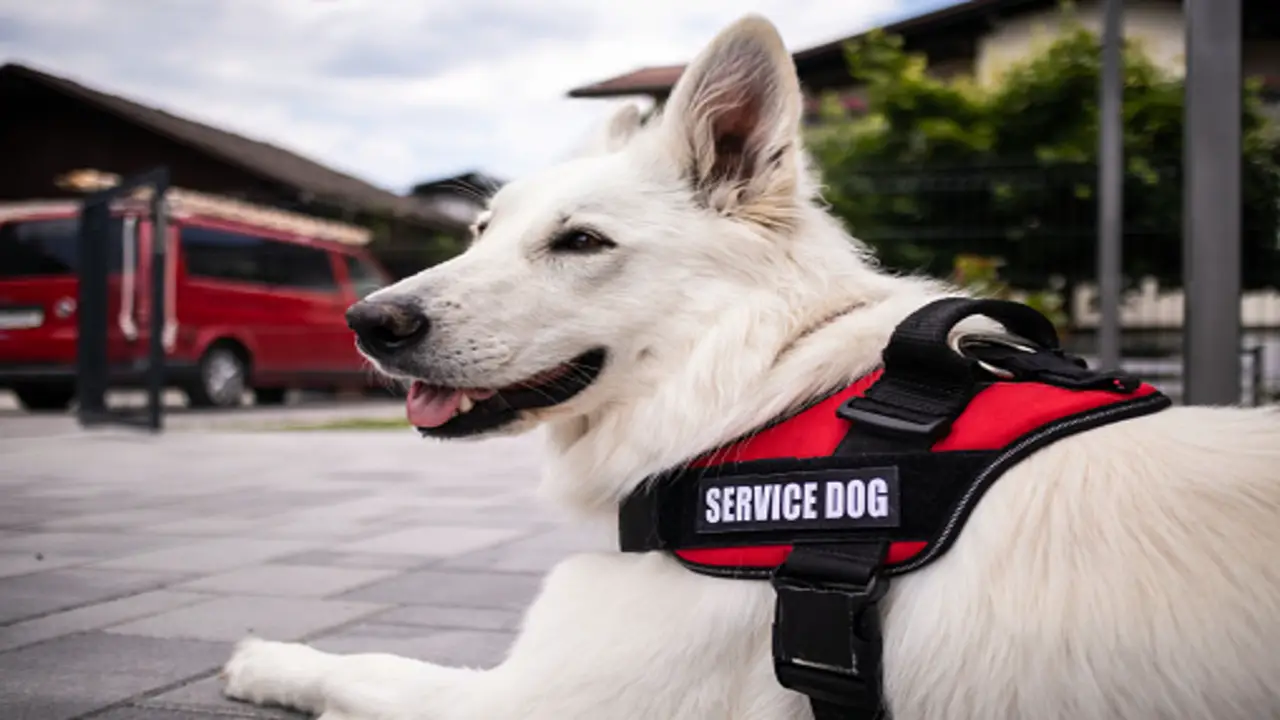
Several important factors must be remembered when considering training a service dog for anxiety. First, it’s essential to determine if a service dog is the right option for managing your anxiety. Understanding the legal requirements and guidelines for training a service dog is also crucial.
Additionally, choosing a suitable breed or individual dog for service dog training is important for success. Seeking professional guidance and assistance from a dog trainer will help ensure you are on the right track. Finally, consistent training and reinforcement are necessary to maintain the effectiveness of the service dog’s skills.
Conclusion
Training a service dog for anxiety can be a transformative experience for the individual with anxiety and the dog. It requires patience, consistency, and dedication to ensure that the dog is able to perform their tasks effectively and provide the necessary support.
By following these steps on how to train a service dog for anxiety, seeking professional guidance when needed, and establishing a strong bond with the dog, individuals with anxiety can greatly benefit from having a service dog by their side. The presence of a well-trained service dog can help alleviate anxiety symptoms and provide a sense of comfort and security in various situations. With proper training and ongoing care, service dogs can significantly impact the lives of those struggling with anxiety.
Frequently Asked Questions
How Long Does It Take To Train An Anxiety Service Dog?
The duration of training an anxiety service dog can vary based on different factors. On average, it may take several months to a couple of years to fully train these dogs. Consistency, patience, and positive reinforcement are crucial in the training process.
What Are The Commands For An Anxiety Service Dog?
Common commands for an anxiety service dog include “sit,” “stay,” and “down.” Other important commands are “heel,” “leave it,” and “wait.” Tasks may include “block,” “deep pressure therapy,” and “alerting to panic attacks.” Training focuses on reinforcing positive behaviors and providing rewards.
Is Anxiety Enough For A Service Dog?
Anxiety can qualify someone for a service dog, providing emotional support and assistance. However, not everyone with anxiety will qualify. Medical professionals and organizations evaluate each case individually to determine eligibility for a service dog.
How Do You Scent Train A Service Dog?
Scent training a service dog for anxiety involves familiarizing them with specific scents associated with the person’s condition. Start by pairing the scent with positive reinforcement, gradually increasing difficulty by hiding the scent for the dog to locate. Consistency and repetition are key in this training process.
What Are The Benefits Of Training A Service Dog For Anxiety?
The benefits of training a service dog for anxiety include emotional support, alleviation of symptoms, and increased independence. These dogs can perform specific tasks during anxiety episodes and provide security and companionship.

